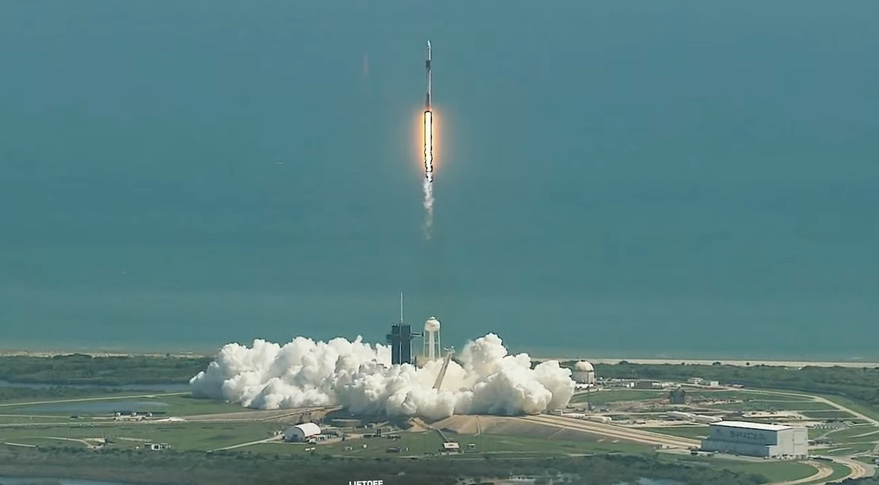
SpaceX launches commercial mission to ISS (Image Credit: Space News)
COLORADO SPRINGS — SpaceX launched a Crew Dragon spacecraft April 8 carrying four commercial astronauts to the International Space Station for Axiom Space.
The Falcon 9 lifted off at 11:17 a.m. Eastern from Launch Complex 39A at the Kennedy Space Center. The Crew Dragon spacecraft Endeavour, which previously flew the Demo-2 and Crew-2 commercial crew missions for NASA, reached orbit and separated from the rocket’s upper stage 12 minutes later.
The rocket’s first stage, on its fifth flight, landed on a droneship in the Atlantic Ocean. The stage previously launched SpaceX’s first non-NASA Crew Dragon mission, Inspiration4, last September, as well as two GPS missions and one set of Starlink satellites.
Endeavour is flying the Ax-1 mission for commercial human spaceflight company Axiom Space. The spacecraft is scheduled to dock with the ISS at about 7:45 a.m. Eastern April 9 for an eight-day stay.
The Ax-1 commander is Michael López-Alegría, chief astronaut for Axiom Space. A former NASA astronaut, he flew on three shuttle missions and one Soyuz mission, the latter for a six-month stay on the ISS. He holds NASA records for the most career spacewalks, 10, and cumulative spacewalk time, 67 hours and 40 minutes. After retiring from NASA a decade ago, he held several industry positions, including president of the Commercial Spaceflight Federation, an industry group.
Larry Connor, one of the three customers of the mission, is also pilot of the Crew Dragon for Ax-1. He is founder and president of The Connor Group, a real estate investment firm in Ohio. He is a private pilot who has competed aerobatic competitions and a race car driver.
Eytan Stibbe is the second Israeli to go to space, after the Ilan Ramon who died on the STS-107 shuttle mission in 2003. A former Israeli Air Force Pilot, he is an investor who is calling his mission “Rakia,” a biblical term for the creation of the sky.
Mark Pathy is a Canadian entrepreneur who is chief executive of Marvik, an investment and financing company. He is the 12th Canadian to go to space and the second Canadian private astronaut after Guy Laliberté, who flew to the ISS on a Soyuz mission in 2009.
All four plan to perform dozens of experiments over more than 100 hours, supporting research from organizations such as the Mayo Clinic, Cleveland Clinic, Canadian universities and Israel’s Ramon Foundation and the Israel Space Agency. The Ax-1 crew emphasized they considered themselves “private astronauts” and not space tourists because of the research they will be doing and their extensive training.
“Our guys aren’t going up there and floating around for eight days taking pictures and looking out of the cupola,” said Derek Hassmann, operations director at Axiom Space, said at a prelaunch briefing April 7.
The mission is a pathfinder for future commercial missions to the ISS, which themselves serve as a transition to the installation of commercial modules by Axiom on the ISS and, by the end of the decade, one or more commercial space stations that will succeed the ISS.
“We’re super-excited to see this. We know we’re going to learn a lot from this first mission, working side-by-side in a very aggressive schedule on orbit during those eight days,” said Angela Hart, NASA commercial LEO program manager, at the prelaunch briefing. “We’re committed to continue these private astronaut missions.”







